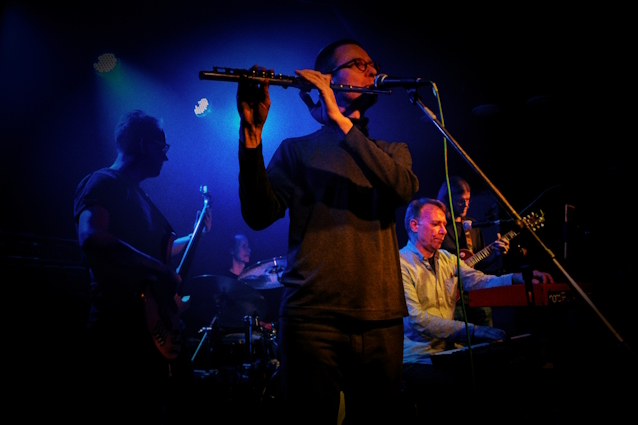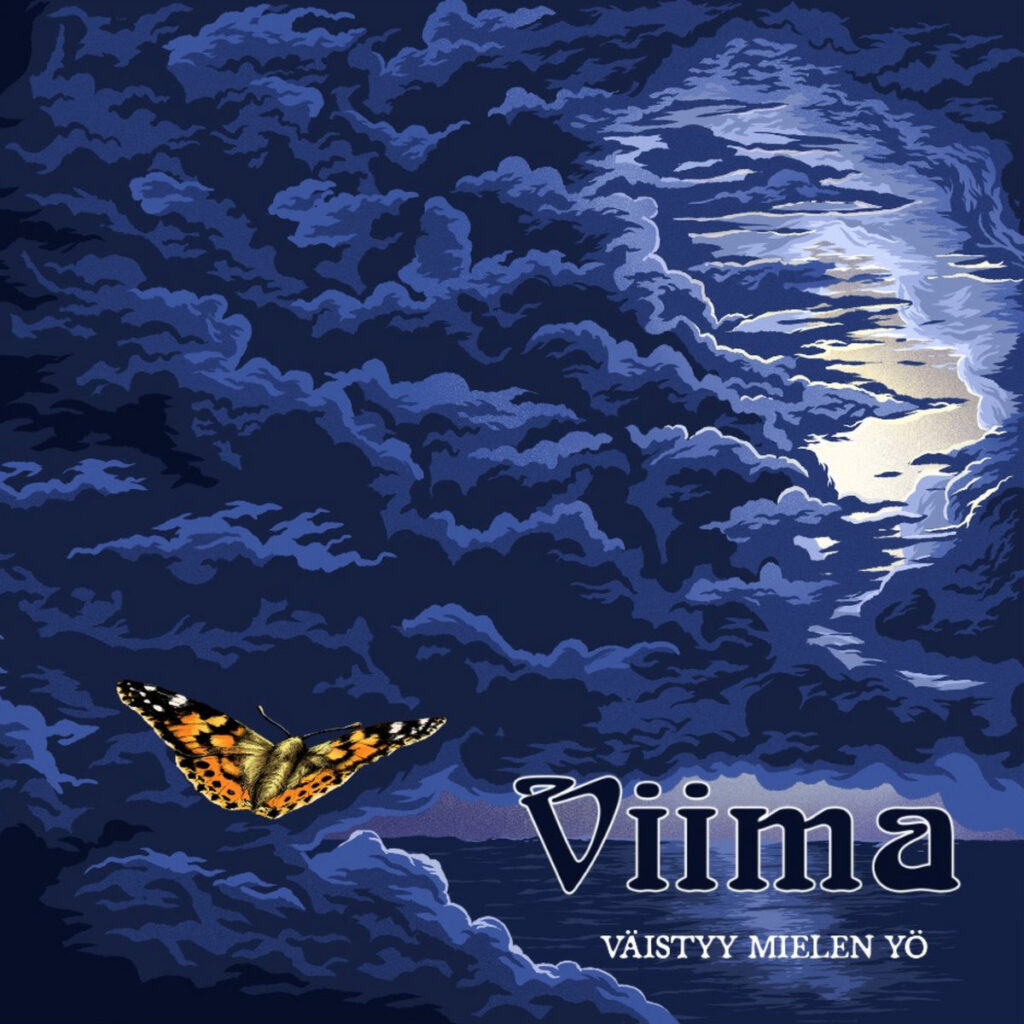Finnish symphonic progressive rock act VIIMA released their newest studio album entitled “Väistyy Mielen Yö” at the beginning of the year. Guitarist Mikko Uusi-Oukari spoke for Prog Sphere about the band’s discography, challenges, and more.
Viima originated from the remnants of the prog band Lost Spectacles. Can you share the story behind the formation of Viima and how the transition from Lost Spectacles influenced the band’s sound and direction?
I would say that the remnants of Lost Spectacles recorded the album ”Ajatuksia Maailman Laidalta”. Lost Spectacles had changed from English to Finnish lyrics and we thought it would be better to release the record with a Finnish band name. The name Lost Spectacles was actually somekind of work name for Lost Spectacles playing a Jethro Tull tribute set. We were never actually happy with the name and didn’t think it as ”final name”. But finally there were keyboardist Kimmo Lähteenmäki and me left from the old band and we two were going to different directions. I thought to form a less serious band and asked a workmate, bass player Aapo Honkanen to join, and also Kimmo to join as a drummer. We played blues instrumentals (Bluesbreakers etc.) for a month or two and thought we need vocals and started to search. We found Hannu Hiltula, who wanted to be vocalist. He also played keyboards, sax and flute, so he was actually a perfect addition to the band and in terms of his selection of instruments, he took my thoughts back to prog -To the idea that it would be great to play the material from Ajatuksia Maailman Laidalta with the band and also live. Hannu brought the drummer Mikko Väärälä to the band. These two additions were pro musicians, so they of course affected the band sound. Playing became more controlled and precise and change from female to male vocalist of course affected the sound a lot.
The first album, “Ajatuksia Maailman Laidalta,” was released in 2006 with lyrics initially in English, later changed to Finnish. How did this linguistic shift impact the overall feel of the album, and what prompted the decision to switch to Finnish?
In Lost Spectacles it was voted whether to have the lyrics in English or Finnish. The result was 3/2 for English. After the first crew change, it changed 3/2 in favor of Finnish, so we made the change. For me, this was more about finding my own identity instead of imitating other bands. Kimmo, on the other hand, would have liked to stick in English, and this was probably a difficult thing for him as long as he remained in the band.
The band underwent changes before the release of “Ajatuksia Maailman Laidalta,” assembling a new lineup. How did the addition of new members influence Viima’s dynamics, and how did you navigate the creative process with a refreshed lineup?
Yes, these changes were actually those I explained in the first question. The starting point with the new line-up was to rehearse first the ”Ajatuksia Maailman Laidalta” songs. It was easy, because quite often the problem with a new band is to have good own material. Creativity was high, because with the 2 new members (Hiltula and Väärälä) we had 4 members that composed music. The creative process in Viima has been: Make a composition, make a demo of it, write it on sheet music and bring it to the band.

In 2009, Viima released its second album, “Kahden Kuun Sirpit.” Can you delve into the themes and creative process behind this release, and how did it differ from your debut album?
The debut album was recorded in Valtone Studios and there were Kimmo, the recording engineer/producer Timo Haanpää and me always present, so it was more like doing things together. In 2nd album Mikko V. and I had both recording equipments, so the recording was one of us recording another member playing at a time. Of course there had been interaction between us in rehearsals that affect the music and arrangements, but in our home studios it was maybe less creative and interactive process than with the 1st album.
In his songs, Hannu used the texts of two Finnish poets of the early 20th century (Uuno Kailas, Aaro Hellaakoski) while Mikko V. wrote the lyrics in addition to music in the title track. The lyrical content of “Kahden Kuun Sirpit” combines the history of the city of Turku with a story of a person’s life in the city and in the archipelago. The title refers to the way the story handles and modifies the truth. Part of the text is based on reality and the rest reflects it in it’s own way. On the other hand the name also refers to a perfect moment by the warm and calm sea when the moon is shining and is reflected from the glassy sea. My track in the 2nd album was instrumental that I wrote already in late 70’s, but it was now played for the first time with a band.
Over the years, the band continued to evolve, playing gigs and composing new material. What were some key milestones and challenges during this period of continuous growth?
I see formations of new lineups and finishing album recordings/releasing a new album as milestones. It has been challenging to fit a new member into the band. It has actually always been easy, but it takes time. The band’s development or moving forward kind of stops at this stage.
In 2011, Kimmo Lähteenmäki left the band for personal reasons. How did this change impact Viima’s sound and approach to music, and what adjustments did you make to maintain the band’s momentum?
It didn’t affect much our sound or approach, but we had to replace him and there the band’s momentum was actually lost. Kimmo was first replaced by keyboardist Eric Marquis for about a year. He couldn’t then continue with us and Hannu started playing keys that meant loosing either flute/sax of keyboards in parts of the songs. This problem was resolved when Risto Pahlama joined the band.
Viima experienced several keyboard player changes before stabilizing in 2016 with Risto Pahlama joining as the keyboard player and lead singer. How did this addition contribute to the band’s musical identity, and how does having a lead singer affect the overall dynamics?
Risto is very experienced and expressive singer and keyboard player and has strengthened the identity of the band a lot. Viima’s singers have all been lead singers, so this is not a new situation for us.
The band completed the recordings of the new album “Väistyy Mielen Yö” and released it at the beginning of 2024. Can you provide insights into the inspiration and themes explored in this latest release, and how it compares to your previous albums?
Mikko Väärälä’s “Äiti Maan Lapset” (“The Children of Mother Earth”) paints a picture through words and music of the current state of global climate and the political atmosphere of our times and their impact on an individual and society. Petri Hyytiä’s lyrics in the rest of the 4 songs are very visual, he has created powerful images. Another unifying factor in Hyytiä’s texts is that they often describe some liberating or empowering moment or state. Surprisingly, “Pitkät Jäähyväiset” (“Long Goodbyes”), written in 2019, feels very current because of the threat of eco-catastrophe and war. In “Vuoren Rauha” (“Peace of the Mountain”) a man struggles with some inner conflict, but falls asleep peacefully at nightfall, in the bosom of gentle nature.

How does the Finnish cultural and musical landscape influence Viima’s sound, and do you incorporate any elements of Finnish folklore or tradition into your compositions?
In some cases we have done it consciously, like in ”Kaukomielen Kaipaus” that was included in concept album ”Kalevala” (Mellow Records) that is based around Finland’s national epic. Otherwise it is not so conscious.
Viima has been actively playing gigs. How does the band approach live performances, and what do you enjoy most about connecting with your audience in a live setting?
In addition to making records, gigs are the other part of being a band. What we like most is to sense the audience is enjoying what they are hearing. Even though we like gigging our gigs have in recent years been pretty rare events.
Are there specific tracks from your discography that hold special significance for the band or have unique stories behind their creation?
All of them are specific in some ways and have a stories behind their creation. I think one holding a special significance is the title track of the first album, ”Ajatuksia Maailman Laidalta”. Already mentioning the name makes us laugh. I just don’t know why. The tracks of Mikko Väärälä are specific already because of their length and number of different parts in them.
Looking ahead, what does the future hold for Viima? Are there plans for tours, new albums, or any exciting musical endeavors on the horizon?
At least some gigs are planned. Maybe a compilation album containing tracks outside our 3 albums. Probably starting the 4th album after having a little rest.
Can you share any memorable experiences or challenges encountered during the recording process of “Väistyy Mielen Yö,” and how did the band overcome them?
Some of the songs were recorded with a fairly quick schedule (B side of the vinyl). Others have been matured for a longer time, but the delay has had a positive effect on the final result (A side). In the end, the delay ended up being a blessing in disguise as it gave us some extra time to fine-tune our sound and make the necessary adjustments to create the best possible recording. It taught us the importance of perseverance and teamwork, and ultimately strengthened our bond as a band.
As a band with a rich history and continuous evolution, how do you see Viima’s role within the progressive rock/folk rock scene, and what legacy do you hope to leave with your music?
With 3 albums released we have somekind of a role in Finnish prog scene. Not many Finnish first wave (70’s) prog bands exist any more, so I think the importance of the later bands may increase.
Follow VIIMA on Facebook here, and check their work on Bandcamp.

